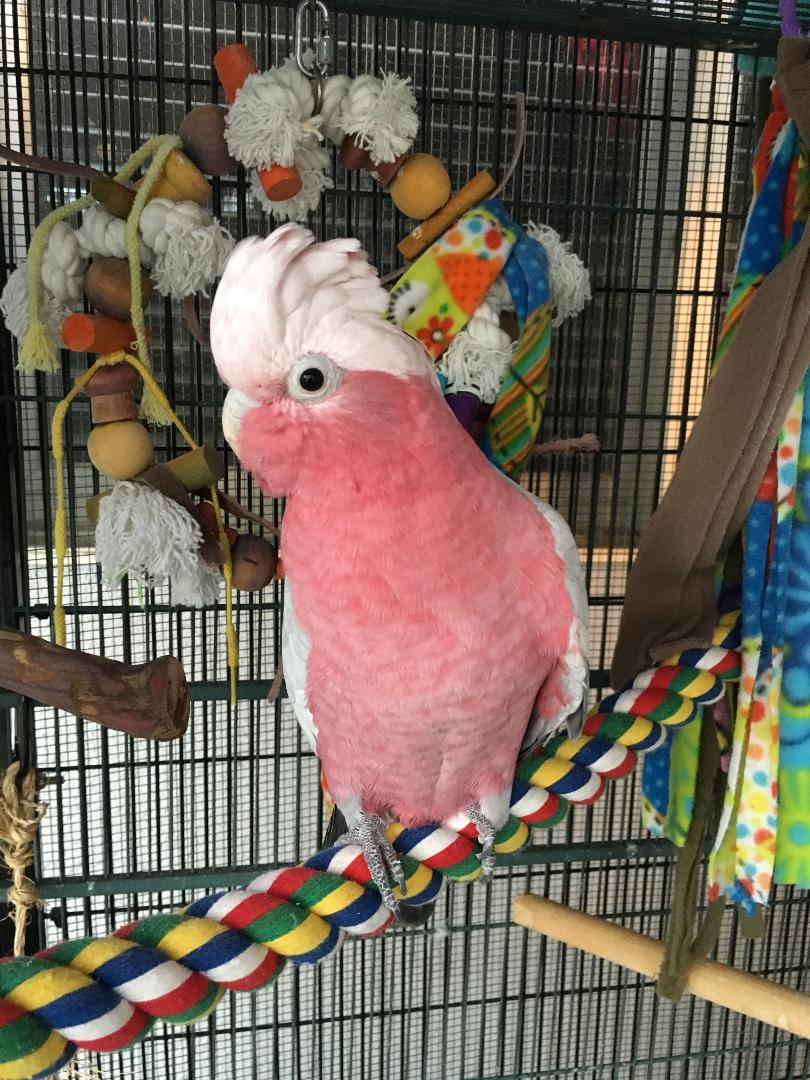Bringing a new companion bird home can be exciting for you but frightening for your bird. The key to introducing your new feathered friend to your home in a Fear Free way is to plan for and set up his new cage and environment in a mindful manner before you bring him home. Maintaining an empathetic perspective will help to ensure that your new bird feels safe, comfortable, and calm as he acclimates to your home environment, daily household activities, and family (including other pets you may already have). Here’s what to consider.
Cage Placement
When deciding where to place the cage, your bird’s health and welfare are the top priority. Although the cage may look great in the living room in front of the bay window, that may not be the best placement for your bird’s physical and mental wellbeing. Windows can be drafty. The sun can shine too strongly through the window, overheating the bird. Activity she sees outside can be stressful. And a cage placed in a high-traffic area can cause your bird undue stress and anxiety.
Instead, place the cage in an area of the room away from drafty windows and doors. Make sure to locate it where your bird can see human family members (for social interaction), but also where he can enjoy some quiet time during the day (and definitely at night). Maintain a little space between the back of the cage and the wall for ease of cleaning, and to keep your bird from reaching out to chew on the wall. A plastic floor pad (like the kind used for office chairs) placed under the cage will protect flooring and make cleanup easier.
Cage placement needs to be conducive to building and maintaining trust and social interaction with you, your family, and other pets (under strict supervision). You’re all living under the same roof, so you all need to learn to interact in a calm manner. Too much activity can be stressful for your bird, especially while she’s still getting used to living in your home. Too little activity won’t provide the opportunity for you to integrate your bird socially into your home.
Lighting and Temperature
Where you place the cage also depends on the lighting and temperature control in the room. Natural lighting is best, but make sure the bird isn’t relegated to a part of the room that is dark much of the time. Well-placed lighting will help keep your bird happy and engaged with the household during the day, and able to get a good night’s sleep once lights are switched off (you may want to also provide a light cage cover so the bird can wind down at the end of the day). Avoid placing the cage too close to heating or cooling vents, heaters, or radiators. Make sure temperature can be well-regulated to keep your bird comfortable during all seasons.
Food and Water Bowl Placement
Food and water bowls should be easily accessible from perches inside the cage. Make sure they’re not in an area where they could be contaminated by feces or placed in such a way that food could fall into the water or vice versa. You should be able to reach them easily for cleaning and refilling.
Perches
Choose perches appropriate to the size and type of bird you have. The claws should comfortably grasp the perch. A perch that is too narrow or too thick can cause discomfort and pain to your bird’s feet. Birds appreciate a variety of perch textures and configurations, making natural branches such as manzanita a popular choice.
Playtime
Your bird will benefit from ample playtime both inside the cage environment as well as supervised activity outside of it. Inside the cage, provide a few well-placed and mindfully chosen toys. Birds love to chew and “preen” toys that feature a variety of safe materials and textures. Don’t overwhelm your bird with too many toys, though, which can be stressful.
Some cages come with playpens attached to the outside top area. These allow your bird a bit of freedom (under your watchful eye, of course) from the cage. Birds like to be up high, so a cage-top playpen is ideal.
Cage Maintenance
Above all, keep your bird’s cage and environment clean by changing the cage liner regularly (daily, if possible), washing and refilling food and water bowls daily, and removing and replacing perches and toys as they become chewed and frayed. Your bird will appreciate the care and compassion you show by making sure the cage is a place where he can feel comfortable, safe, and stress-free—providing the perfect foundation for a trusting, loving relationship.
This article was reviewed/edited by board-certified veterinary behaviorist Dr. Kenneth Martin and/or veterinary technician specialist in behavior Debbie Martin, LVT.








